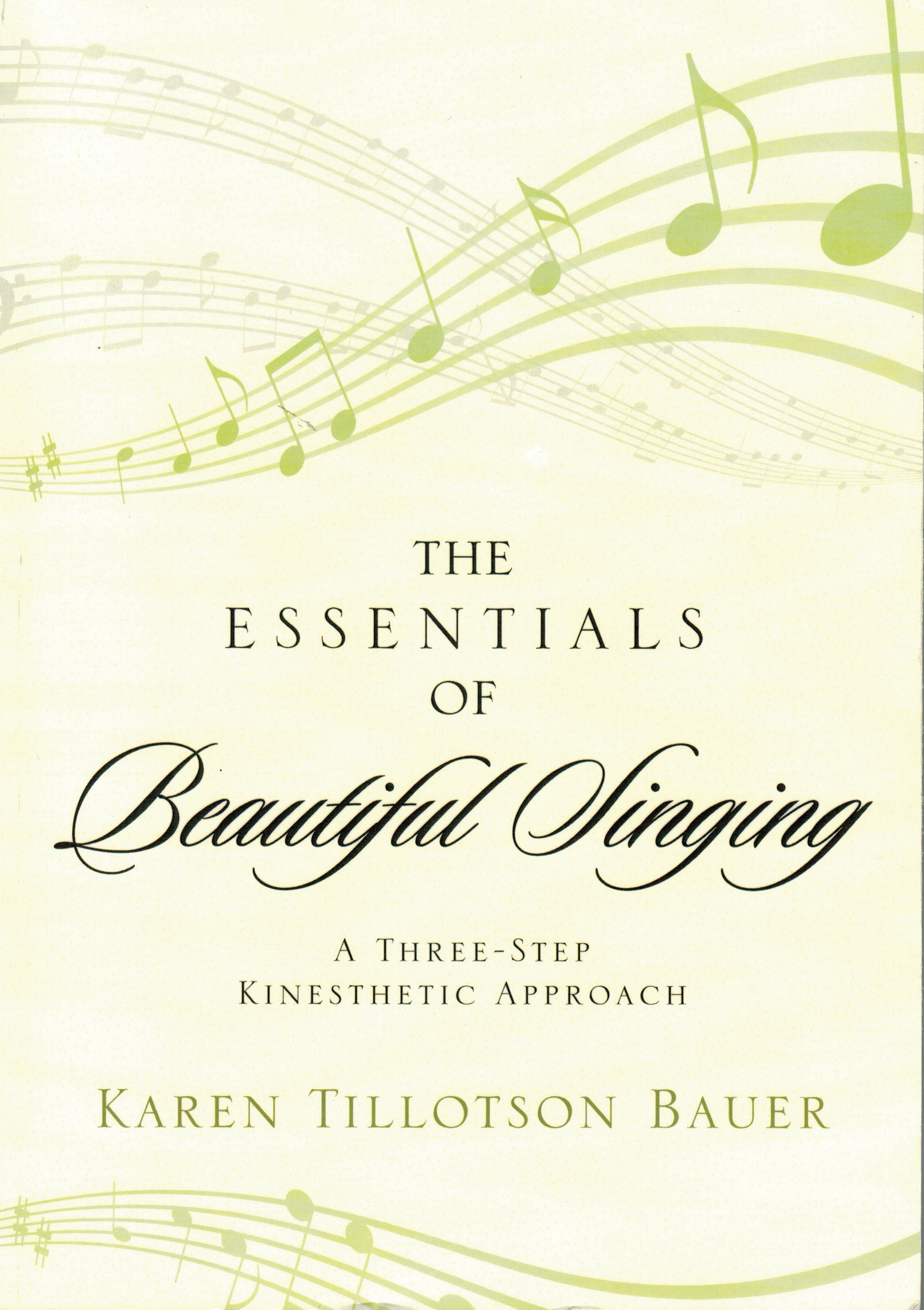Reviewed by Tobin Sparfeld, choral conductor and teacher
Author Karen Tillotsen Bauer has taught voice and voice pedagogy for over thirty years and is currently a professor at North Park University in Chicago, IL. She is also a former president of the Chicago chapter of National Association of Teachers of Singing. In her book, Bauer draws on her extensive experience and describes her efforts in developing a practical vocal technique for classical singing.
As the title indicates, Bauer’s book focuses on the kinesthetic aspects of singing, detailing sensations and physical steps of proper bel canto vocal technique. This book does not contain anatomical pictures or diagrams of the larynx, nor will readers find links to sound files of singing examples. Instead there are text descriptions of the steps necessary for healthy, efficient singing. While not a standalone textbook for vocal/choral pedagogy settings, it can be a valuable resource.
The book is structured into three parts. Part One gives an overview of Bauer’s process for healthy singing (which also has three components) in addition to the topic of appropriate singing posture. Rather than simply focusing on the position of the head and shoulders, Bauer describes good posture as the practice of total alignment of one’s body. This short section advises the singer to feel the sensation of that alignment while standing against the wall, becoming aware of the natural curvature of the back against that wall, eventually stepping away from the wall while remaining in the same position.
In Part Two Bauer describes her three-step singing process, referred to in the book as “OOFing:” that is, Open Body, Open Throat and Resonance, and Forward Articulation. Open Body refers to the sensation of proper breathing. Rather than breath “support,” Bauer prefers the less ambiguous terms breath “control” or breath “management.” She has found in her teaching experience that most singers, even advanced ones, do not have clear concepts the breathing process. Singers should feel the sensation of the torso being pulled out by the muscles during inhalation rather than being pushed out. Several useful concepts are described here, such as the idea that the muscles of exhalation are the same as those used inhalation. Another valuable tip advises singers to take a small extra breath at the end of each breath to prevent “hooking” or closing off the larynx immediately after inhalation.
Open Throat refers to preparing one’s body for a resonant sound. Bauer’s process involves imagining a yawn during inhalation in order to lower the larynx, and relaxing the tongue and jaw to use as few muscles as necessary in sound production. Bauer briefly describes the function of the pharynx and mouth in achieving a resonant sound. Helpful exercises follow each chapter in the book for students to become more familiar with the sensations of each step.
The third step of the process, Forward Articulation, deals with the subjects of resonance and diction. Bauer avoids the term “forward placement,” which, though prominent for many years in vocal pedagogy, can be misleading and sometimes counter-productive. Provided the singer demonstrates open breathing and an open throat, the singer can then use the front of the mouth in order to clearly enunciate vowels and consonants. It is during this step that the singer should begin to focus on the tone he/she is producing. Bauer provides a helpful description of the shape of the mouth, lips, and tongue for all five pure vowels. There is also a wonderful suggestion to proceed immediately to the vowel for consonants which completely stop the breath (p, t, k, etc.). Choral intonation often suffers during these crucial moments when singers fail to effectively transition the space in their mouths from consonants to open, resonant vowels.
Remaining chapters discuss the principles of registration, range extension, legato singing, and musicality. Bauer describes a two-register approach to singing technique (“heavy” and “light”), noting that the transitions occur for women in the lower part of their voice ranges and men in their upper part. Techniques to navigate through and blend both registers are addressed separately for men and women. Interestingly, Bauer introduces staccato singing as one of the last technique (well after legato singing), a different approach from other pedagogical methods.
Despite a subject matter that can be difficult to describe in words, The Essentials of Beautiful Singing is written in a direct, clear manner. The reading level is appropriate for college students as well as many younger teenagers. The terminology used in the book is in line with modern voice research, with Bauer thoughtfully explaining her reasoning for the terms she uses (vocal “issues” rather than vocal “problems”). The book provides a brief but understandable introduction to the International Phonetic Alphabet, and the vocal exercises can be directly applied to both vocal and choral settings.
While helpful for any voice teacher and possibly useful as assigned reading for voice students, The Essentials of Beautiful Singing would not serve well as a complete voice pedagogy textbook, as it does not cover subjects such as anatomical models of the larynx, voice classification, IPA terminology, advanced vocal pedagogy, and voice literature. Its effective and targeted exercises, and clear descriptions of how to correct common vocal faults make this a handy companion to anyone who works with singers of all ages.

